Steak is a favorite on this blog. In our quest for continued temperature mastery, we cook and eat a lot of steak here at ThermoWorks. So when I say that the steak we will present here is the new favorite steak of many who ate it, I hope it carries some weight.
What steak is so good that it becomes the go-to for a bunch of hard-nosed steak devotees? Classic steak au poivre. Steak au poivre, rendered to English as pepper steak, is a steak that is not only seasoned with pepper, but is literally coated, crusted in black pepper. It has so much pepper, that you’re bound to think “that’s too much pepper!” It isn’t. In fact, the warm buzz of pepper on the tongue and the lips after eating this steak is part of what makes it so addictively delicious.

In this post, we’ll give you the temps you need to make a perfect steak au poivre that will—I suspect—also become your favorite.
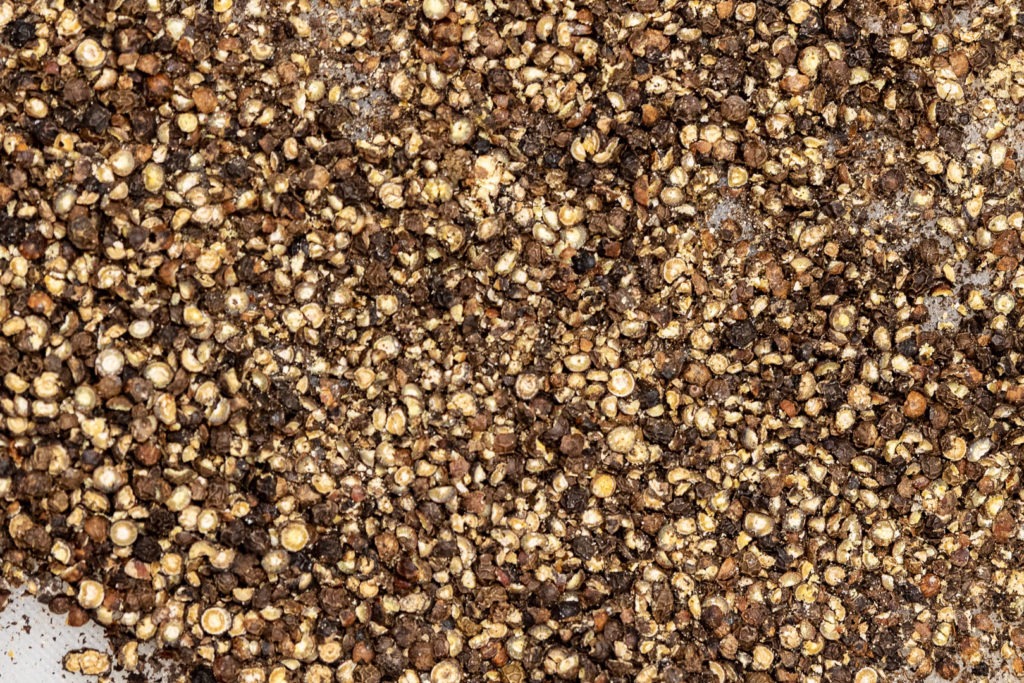
What is steak au poivre?
Steak au poivre is a classic dish that consists of a steak crusted in coarsely cracked black pepper, then seared in a pan with clarified butter, and served with a pan sauce made with shallot, cream, and brandy.
The dish has endured because it is at once richly decadent and yet also well balanced. The beef (we used a strip steak, which is common for this dish) and the cream sauce are luscious and rich. In fact, they are so rich that they call for balance, and balance is delivered by all that pepper. The sharp, bright pungency of the cracked pepper cuts through the heaviness that would otherwise be stifling. The result is a dish that provides luxurious, comforting flavor and mouthfeel with supreme eatability.
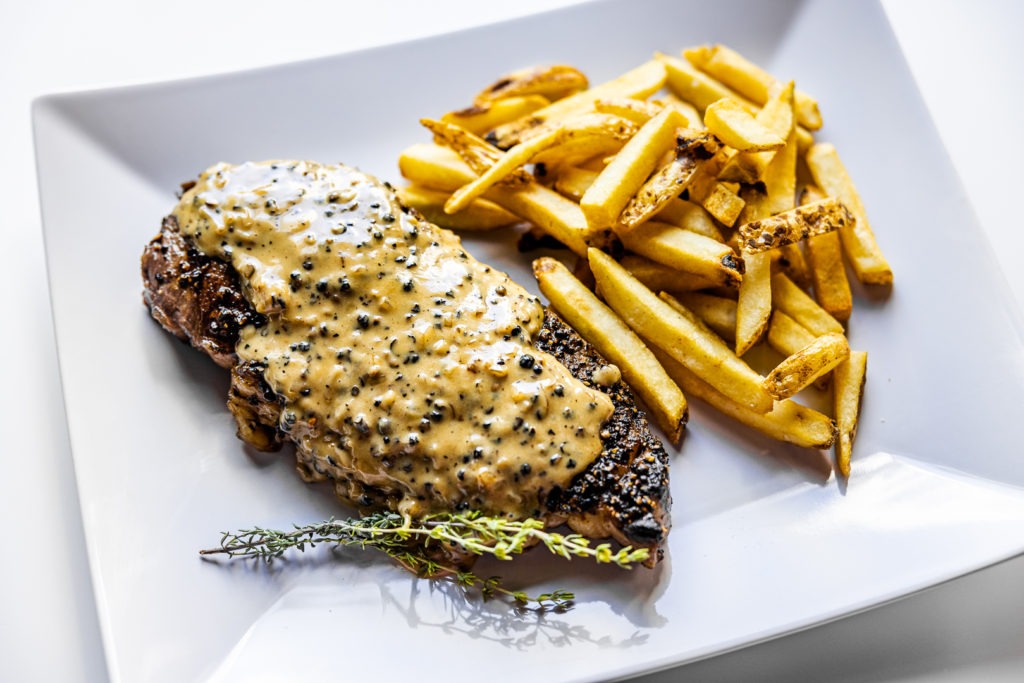
Temps for steak au poivre
For this cook, we want a pan that is slightly cooler than we usually think of for searing a steak. Often, we want a pan at 450°F+ (232°C+), but we want this pan more in the range of 325–400°F (163–204°C). A rocket-high temperature will scorch the peppercorns, leaving you with a coating that tastes more like ash than pepper. You can use an infrared thermometer to keep track of your pan’s temperature, or let the butter pool to one side and check it with your Thermapen® ONE. 2
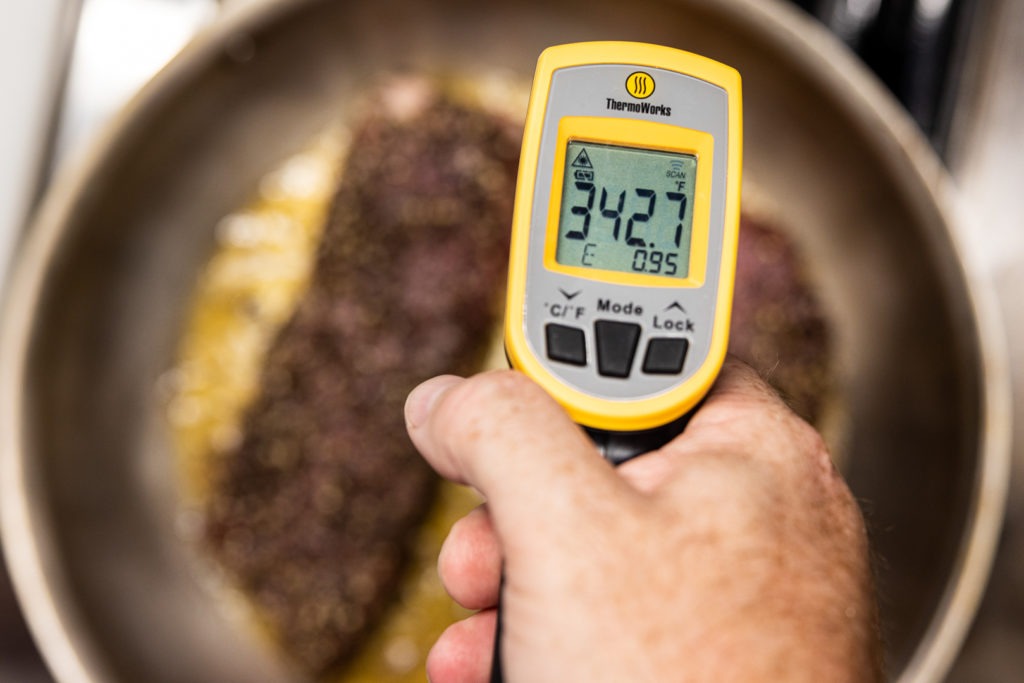
Traditionally, steak au poivre is served either rare or medium-rare, with final temps at 120–130°F (49–54°C) for rare and 130–135°F (54–57°C) for medium-rare. As these steaks are cooking on direct, high heat, they will carry over. In fact, we found that with the flambé step the steaks carry over even more than usual.
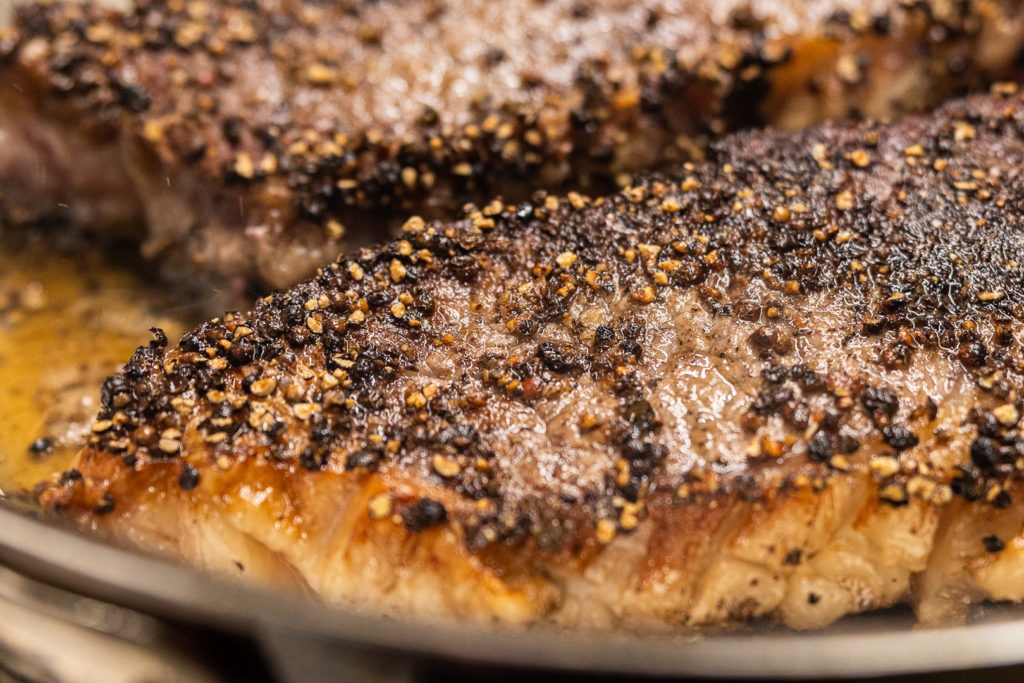
Did I not mention the flambé? Yes, once the steaks reach a temperature about 15°F (8°C) below your target finish temp (use Thermapen ONE to check it), remove the pan from the stove, pour an ounce and a half of brandy over the steaks inside of it, and ignite it by tipping the edge of the pan towards the flame. The suddenly-heated alcohol will fairly explode into a flame for a few seconds and then continue to cook out. The steak should be about ready to pull by the time the brandy is au sec, or mostly dried out.
See, the flambé adds very little heat to the steaks themselves. But for those few seconds, while the brandy is flaming, there is zero heat loss within the steaks. That short period without any cooling seems to jump the temp forward a few degrees, getting you done faster than expected.
Now, you obviously should not do this if you have, say, anything flammable hanging from the ceiling. If setting off a medium-sized fireball in your kitchen isn’t safe, then don’t do it. Instead, turn off the heat, pour the brandy over and let it boil out with the pan’s residual heat.
WARNING: Do not attempt the flambé without a fire extinguisher close at hand.
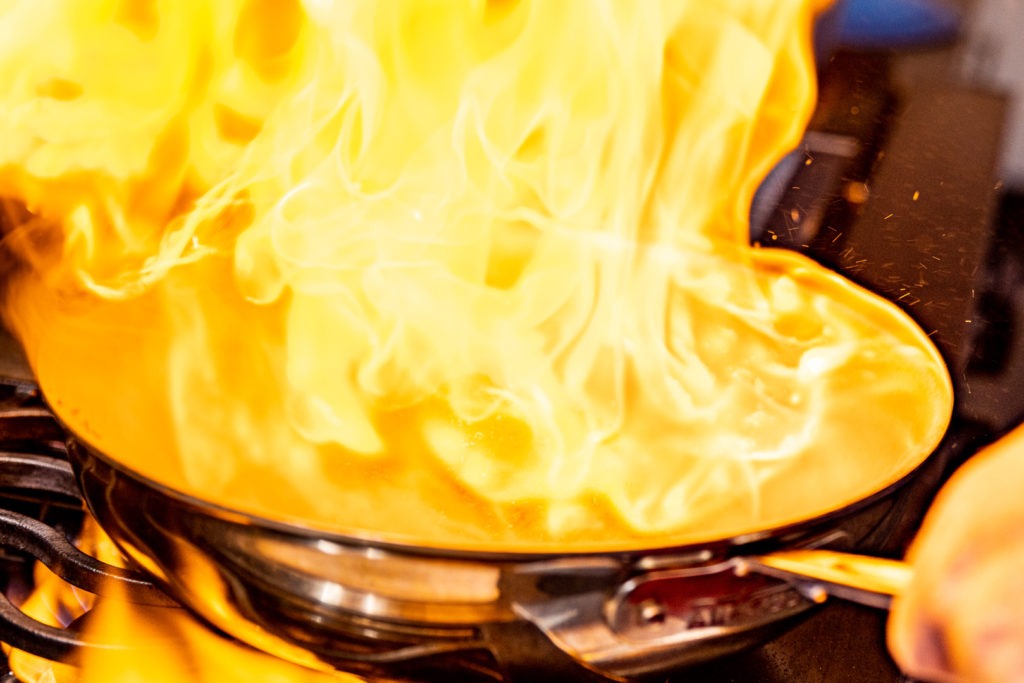
Steak au poivre sauce
The sauce for steak au poivre is simple in its composition and easy in its execution, but magnificent in its final result.
After the steaks have flambéd, they are removed from the pan. Any pepper that escaped the grip of the steaks—possibly a lot of pepper—is left in the pan. A shallot, minced, is added to the hot oil, as is a sprig of thyme. Once the shallot has softened, cream is added to the pan and brought to a simmer until the desired consistency is reached. Finally, a tablespoon of cold butter is stirred in to give the sauce a nice gloss. That’s it. The beef juices, the brandy, the pepper, cream, and shallots—they all mingle together to make a sauce that is 5-star restaurant-worthy, but it only takes minutes to make.
I always have such a fun time cooking classic dishes like this. There’s a sense, to me, of cultural nostalgia in repeating something as established as this, and in making it my own. I also love it because this dish is knock-out delicious. Make it for company that you want to impress. Make it for family to show them you love them. Make it for yourself because you can! Pay attention to those critical temps and you’ll be rewarded with pink, juicy, steak swathed in flavor and sauce unlike any you’ve had before.
Oh, and I absolutely suggest using this recipe as the steak in steak frites. Cook up a batch of golden, crisp fries to have alongside the steak. Do dip your fries in the sauce. Like I said, it’ll be your new favorite.
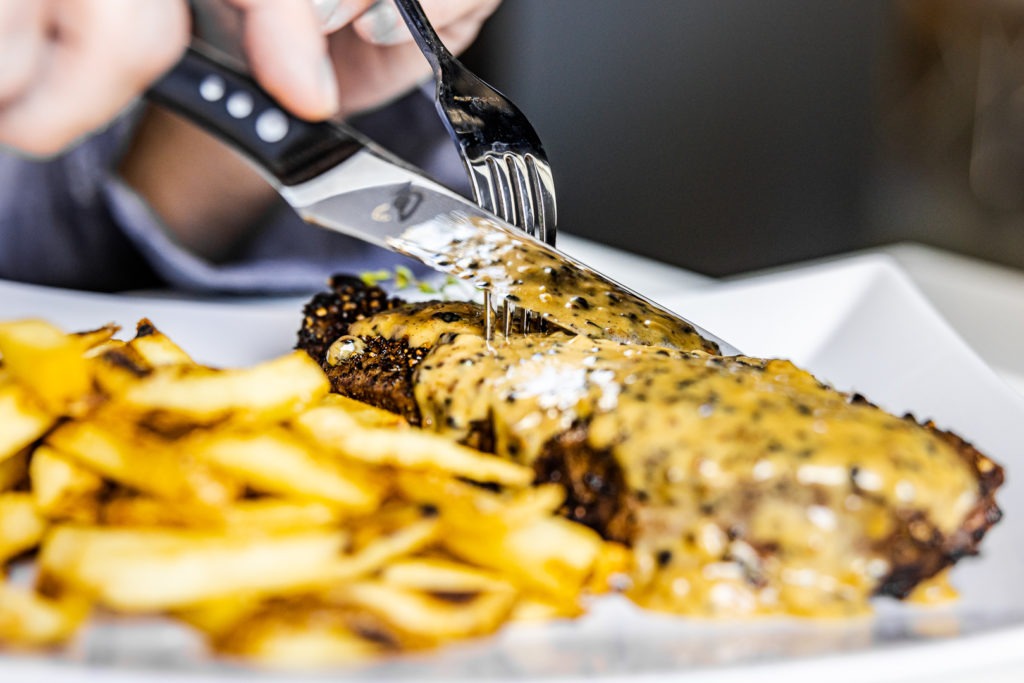
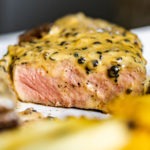
Classic Steak au Poivre Recipe
Description
Steak au poivre, a classic dish
Ingredients
- 2 strip steaks, about 1–1/1/2 inches thick
- Kosher salt
- ~1/2 C whole peppercorns
- 2 Tbsp clarified butter (melt butter and use the clear, oily part that stays on top, leaving the milky watery bits in the bottom of the container)
- 1 1/2 oz brandy
- 1 shallot, minced
- 1 sprig fresh thyme
- 1 cup cream
- 1 Tbsp cold butter
- fries, for serving
Instructions
- Coarsely crush your peppercorns either by putting them in a freezer bag and beating them with a rolling pin or by laying them on a counter and crushing them with the bottom of a heavy pan, pressing down and moving through the pile to crunch them. Use the but of your palm to apply pressure. Ingenuity is welcome for this step, but don’t crush your pepper too finely.
- Score the fat cap on the edge of the steaks to keep them from curling while cooking.
- Salt the steaks generously.
- Dredge each steak in the pile of peppercorns, pressing them down in the pile to make the pepper adhere well.
- Heat a heavy-bottomed pan over medium-high heat.
- Add the 2 Tbsp clarified butter to the pan. Check that the oil temperature is above 325°F (163°C).
- Cook the steaks in the butter for about 3 minutes per side. Flip the first time when the first side is nicely browned.
- Start taking the temperature with your Thermapen ONE. Cook until the steaks reach between 110 and 120°F (43 and 49°C).
- Remove the pan from heat and carefully pour the brandy over the steaks. If you are able to safely flambé and have a fire extinguisher nearby, ignite the brandy and shake the pan as the alcohol burns out. Cook until the brandy is reduced to a tiny amount, almost dried out (au sec, as we say in the cooking world).
- If your situation doesn’t allow for flambé, kill the heat on the stove, add the brandy, and cook, shaking, over the residual heat in your pan until most of the brandy has cooked out. Then relight the stove and continue to cook until the brandy is au sec.
- Remove the steaks to a platter and allow them to rest while you make the pan sauce.
- Add shallot and thyme to the pan and cook until the shallot softens.
- Add the cream, stir, and bring to a simmer.
- Simmer, stirring occasionally, until the sauce thickens. Check for salt, but there should already be plenty of pepper.
- Kill the heat under the pan and stir in one tablespoon of cold butter.
- Plate the steaks and serve, sauced.
Shop now for products used in this post:
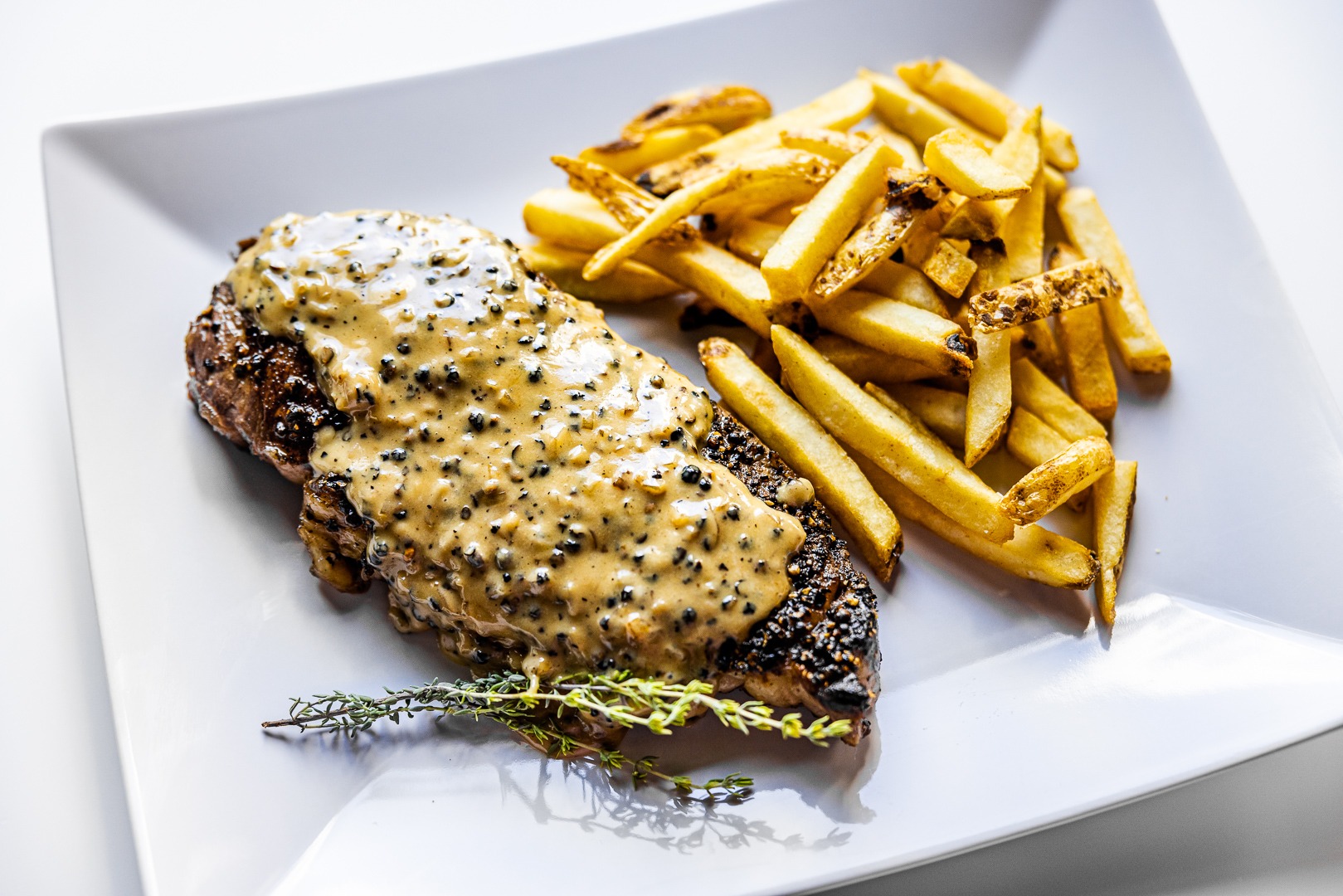
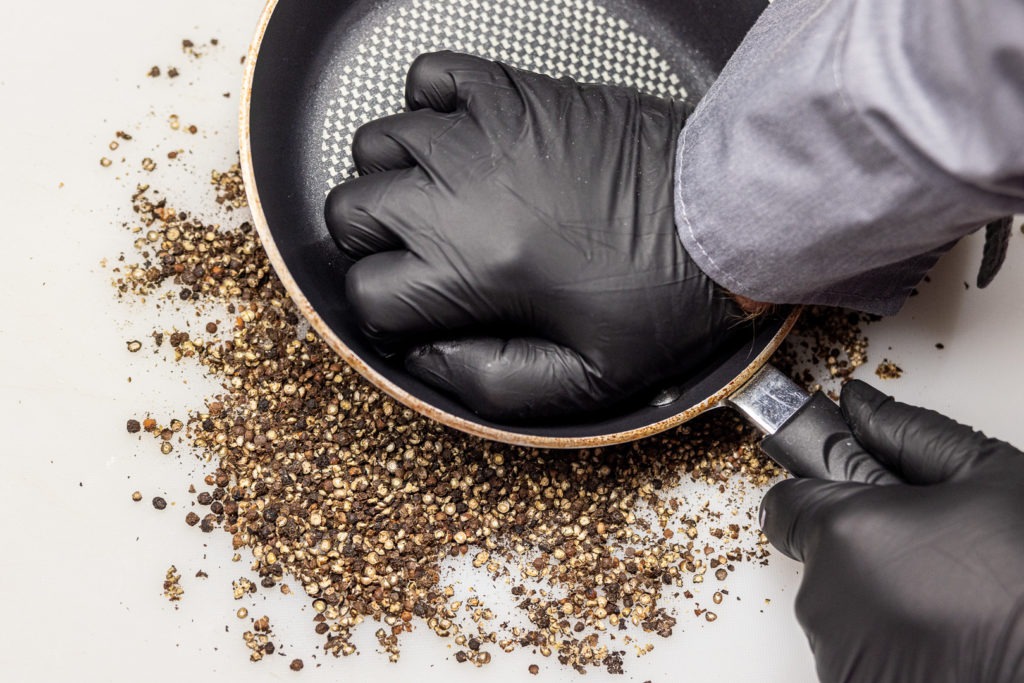
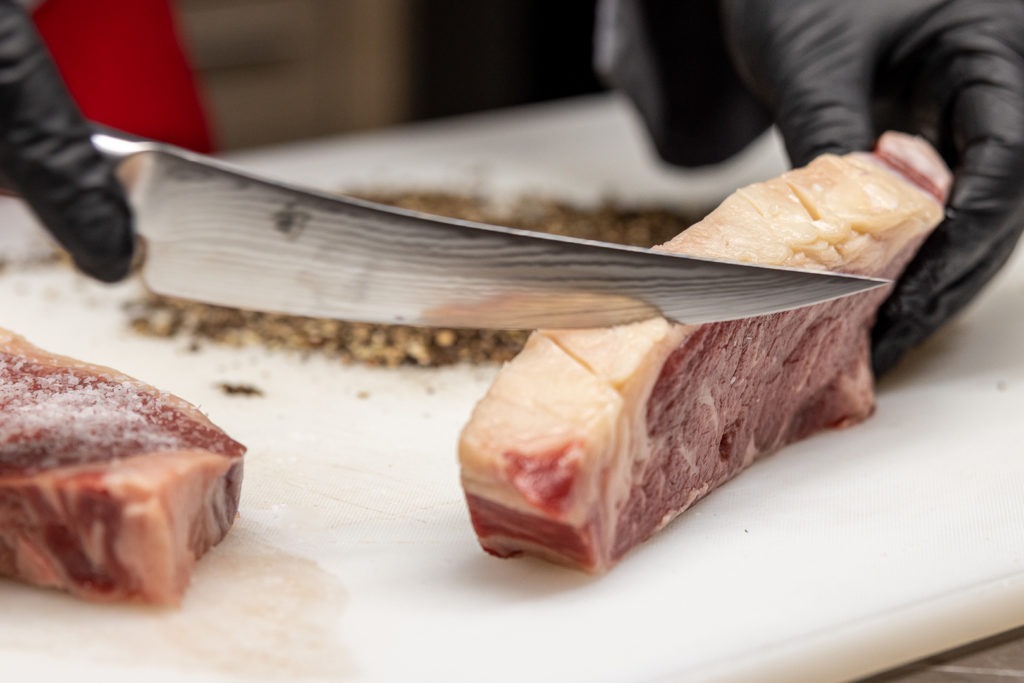
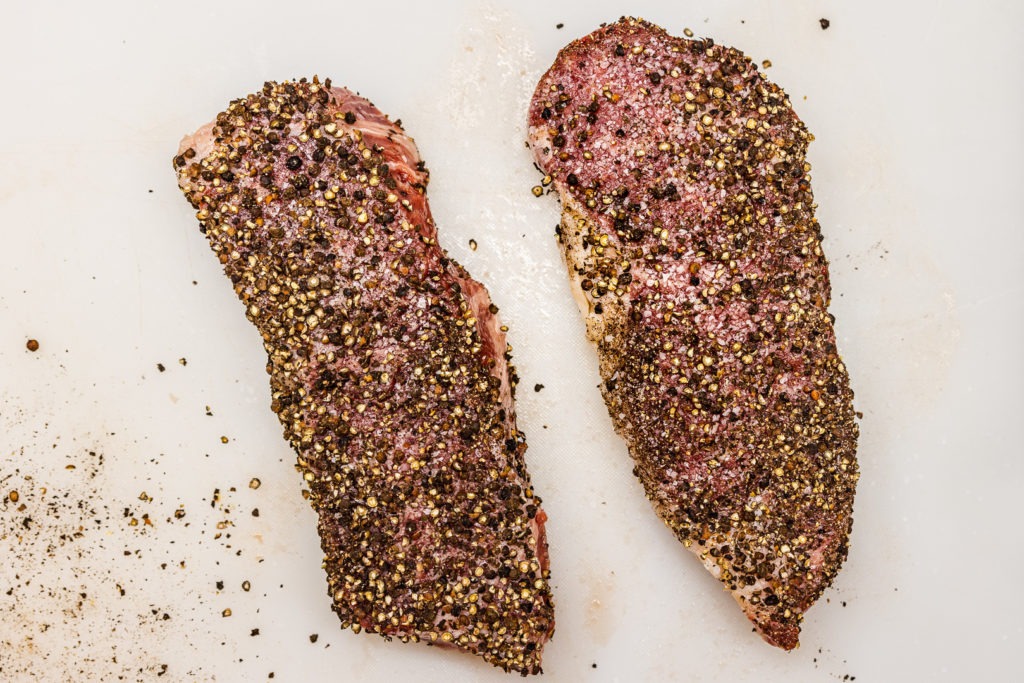
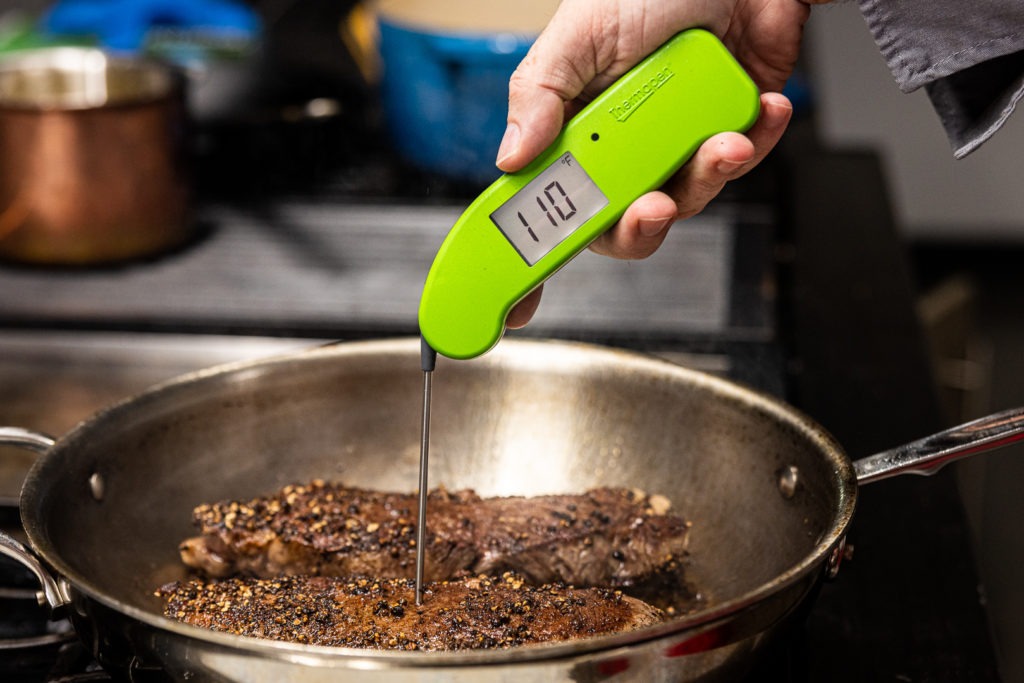
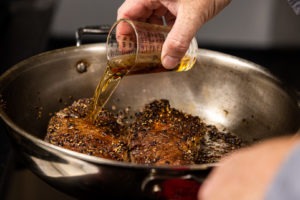
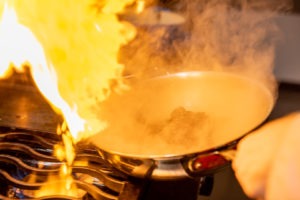
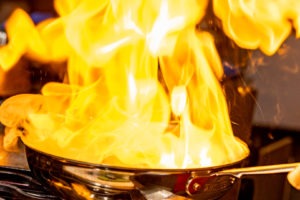
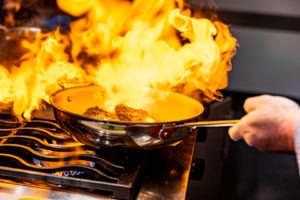
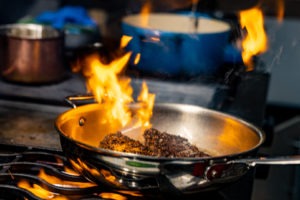
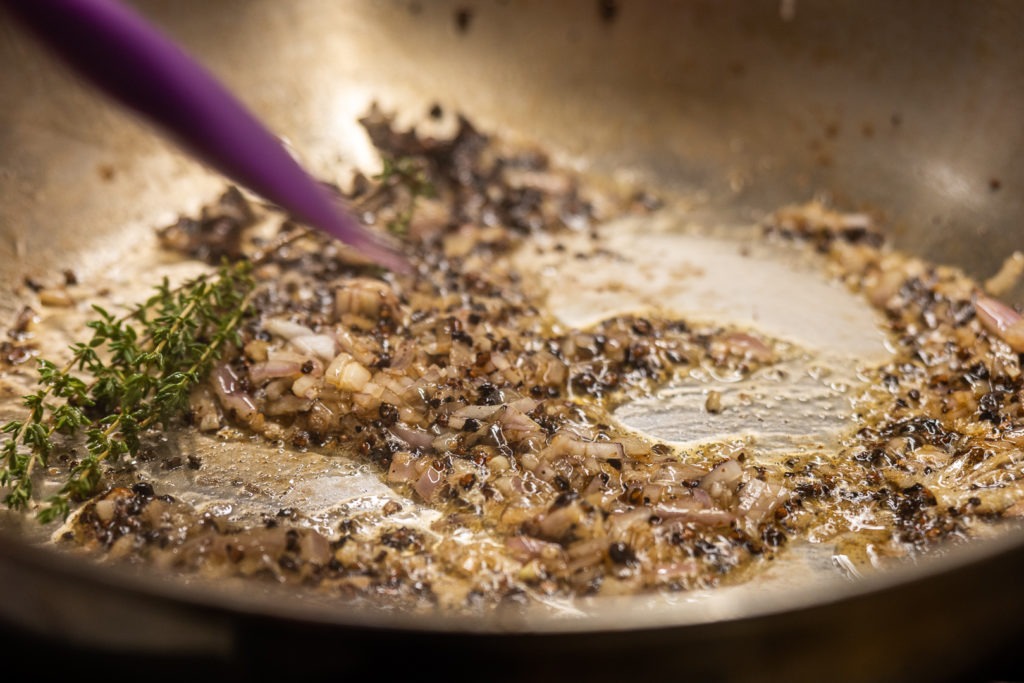
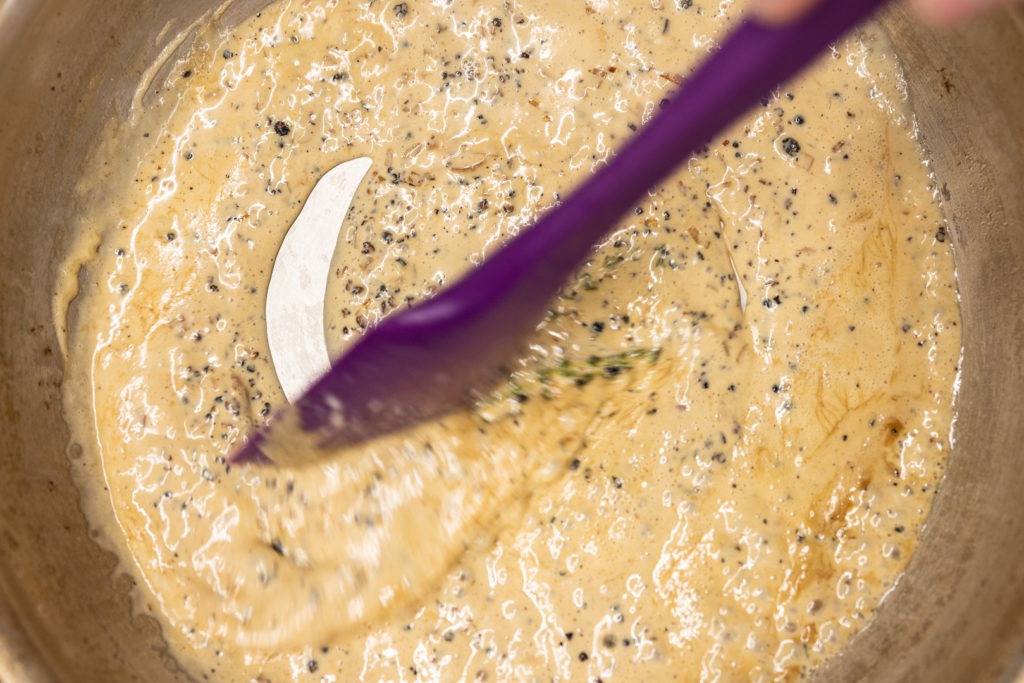
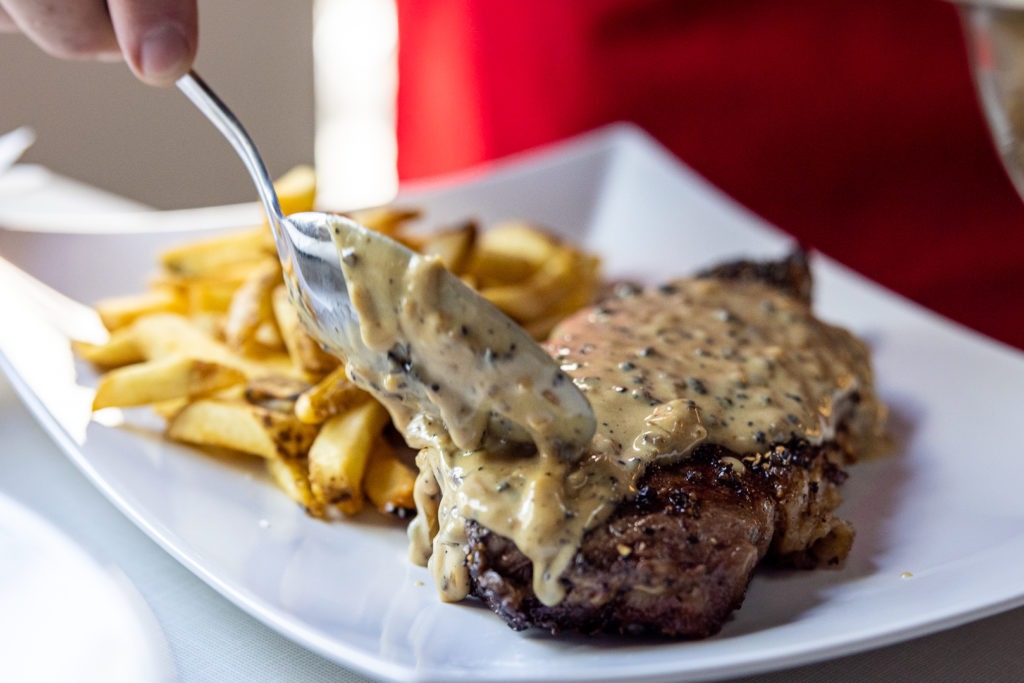

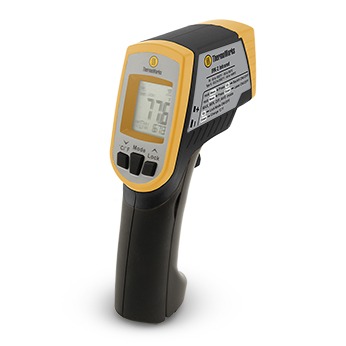
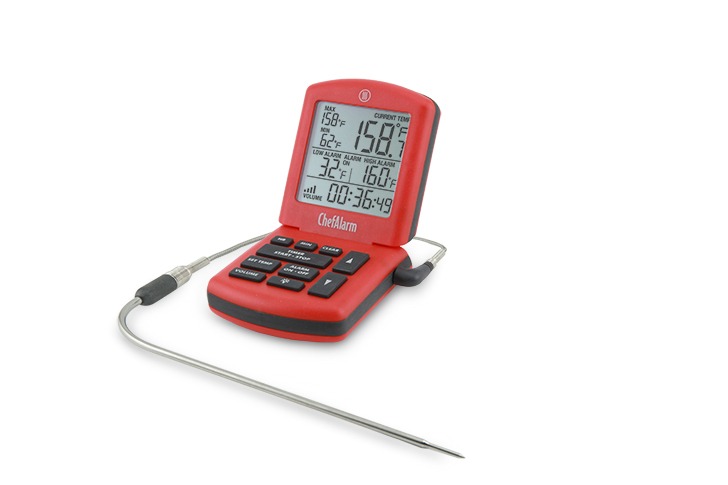

Herb Grant says
Best steak au poivre recipe that I have ever read. I have made this dish many times in the past. But now with this new recipe I will be out tomorrow to get some of the ingredients that I don’t have and cook up one of favourite steak meals. Pepper and beef steak go so well together.
Martin says
Herb,
Thanks so much for the compliment, I hope you enjoy the meal!
Chris says
This recipe is phenomenal. I followed it to a T and this is the best indoor steak I’ve ever made. I love the thorough description of the process and your additional commentary and insights. Top notch! Thanks
Martin says
Fantastic! I’m so glad you enjoyed it.
Falk says
Just made this, only substituting sirloin for the strip and carving it prior to drenching it in the sauce and it was just a pure absolutely decadent delight.
Also had no fries but a good portion of potato mash paired really nicely as well.
Thanks so much for sharing this recipe.
Martin says
So glad you liked it!
StuKin says
Love the details and temps included with this recipe. I’m wondering whether ghee can be used in place of the clarified butter. Isn’t that what ghee is? I have a bottle of green peppercorns in brine in the fridge. I wonder whether a few added to the sauce at the end might give a slight added briny punch of flavor.
Martin says
Absolutely you can use ghee. Some green peppercorns could be VERY fun in the sauce!